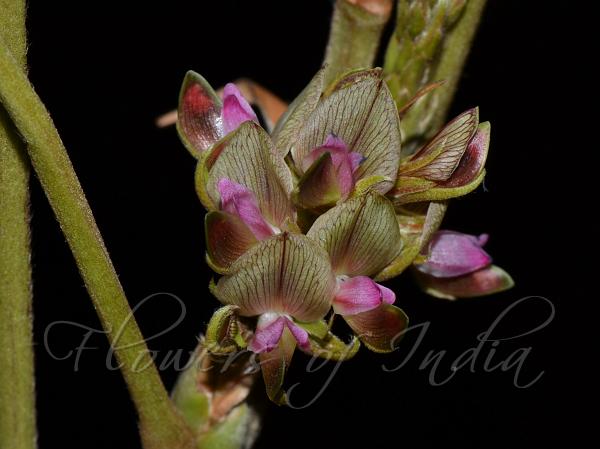|
| Large-Leaf Flemingia |
|

|

| File size | 506116 |
| Original date | 12/29/17 6:15 PM |
| Resolution | 3696 x 2448 |
| Flash | Flash fired, return detected |
| Focal length | 105.0mm |
| Exposure time | 1/60s |
| Aperture | 22.0 |
| Focus Distance | |
| Metering Mode | Multi-segment |
| Camera make | NIKON CORPORATION |
| Camera model | NIKON D7000 |
| Sensor type | OneChipColorArea |
|
|
|
|
Photo: |
Botanical name: Flemingia macrophylla Family: Fabaceae (Pea family)
Synonyms: Crotalaria macrophylla, Flemingia capitata, Flemingia congesta
Synonyms: Crotalaria macrophylla, Flemingia capitata, Flemingia congesta
Large-Leaf Flemingia is a woody, perennial,
deep-rooting, and leafy shrub. It is about 0.6-2.5 m tall. The main
stem is prostrate or erect, with numerous stems arising from a single
base. The young branches are greenish, ribbed, triangular in section
and silky; while the old stems are brown, almost round in section. The
leaves are trifoliate. Leaflets are papery, with a hairless upper
surface. Flowers are borne in mostly dense racemes, in leaf-axils, 5-30
cm long, with 15-40 pea-like flowers. Calyx is 7-13 mm long; flowers
1.4 cm long, white to pink or yellowish, densely silky, standard
greenish with distinct red blotches or stripes and purple tip, wings
rose-pink. Pods are small and turn brown when ripening; they split
open, generally with two shiny black seeds in the vessel. Seeds are
globular, 2-3 mm in diameter, and shiny black. The leaves are
disproportionately large, hence origin of the specific name,
macrophylla. Large-Leaf Flemingia is found in Southeast Asia, southern
China, Taiwan, India and Sri Lanka.
| Identification credit: Sandip Kisan Gavade | Photographed in Bhimgad Wildlife Sanctuary, Belgavi District, Karnataka. |
• Is this flower misidentified? If yes,